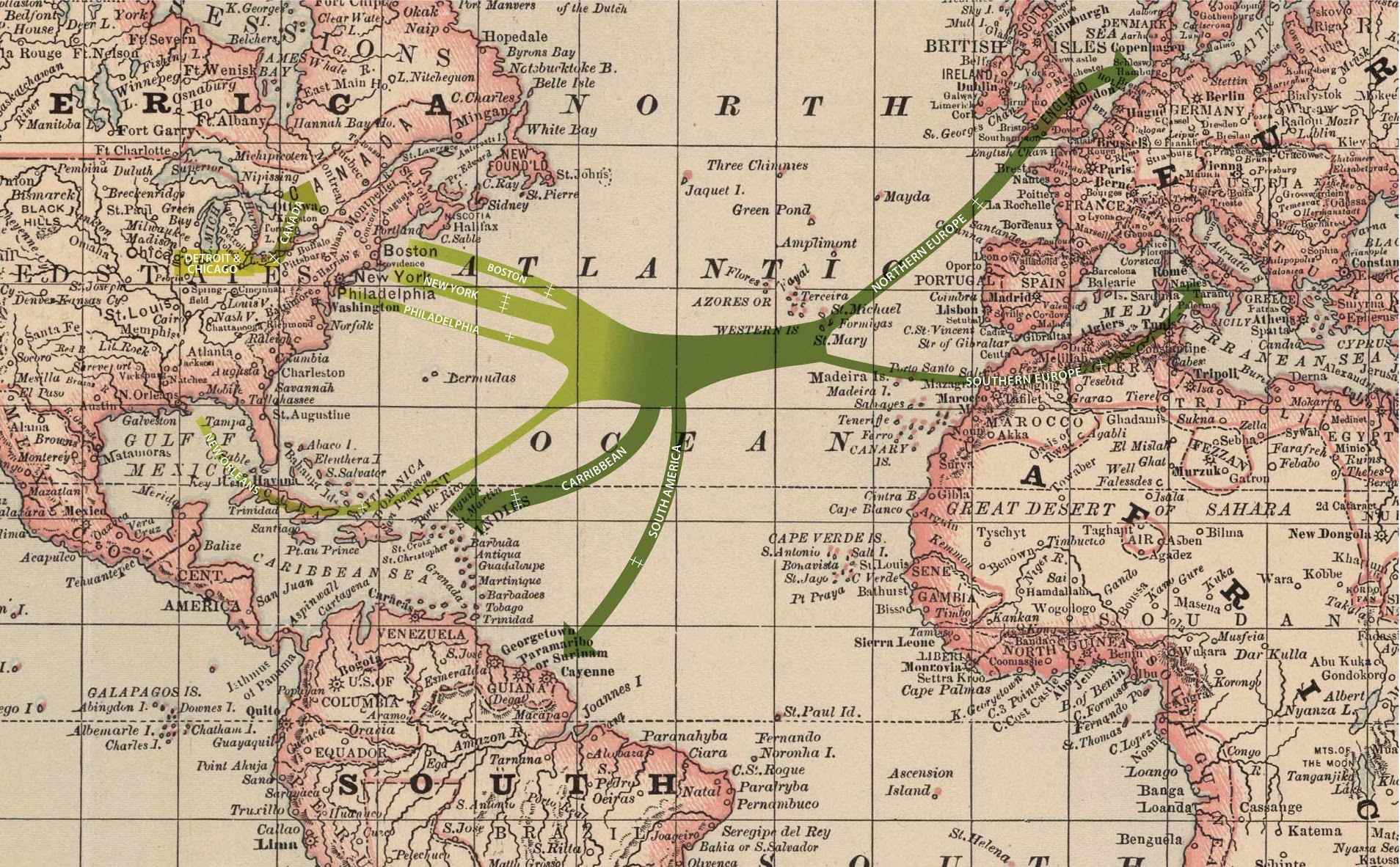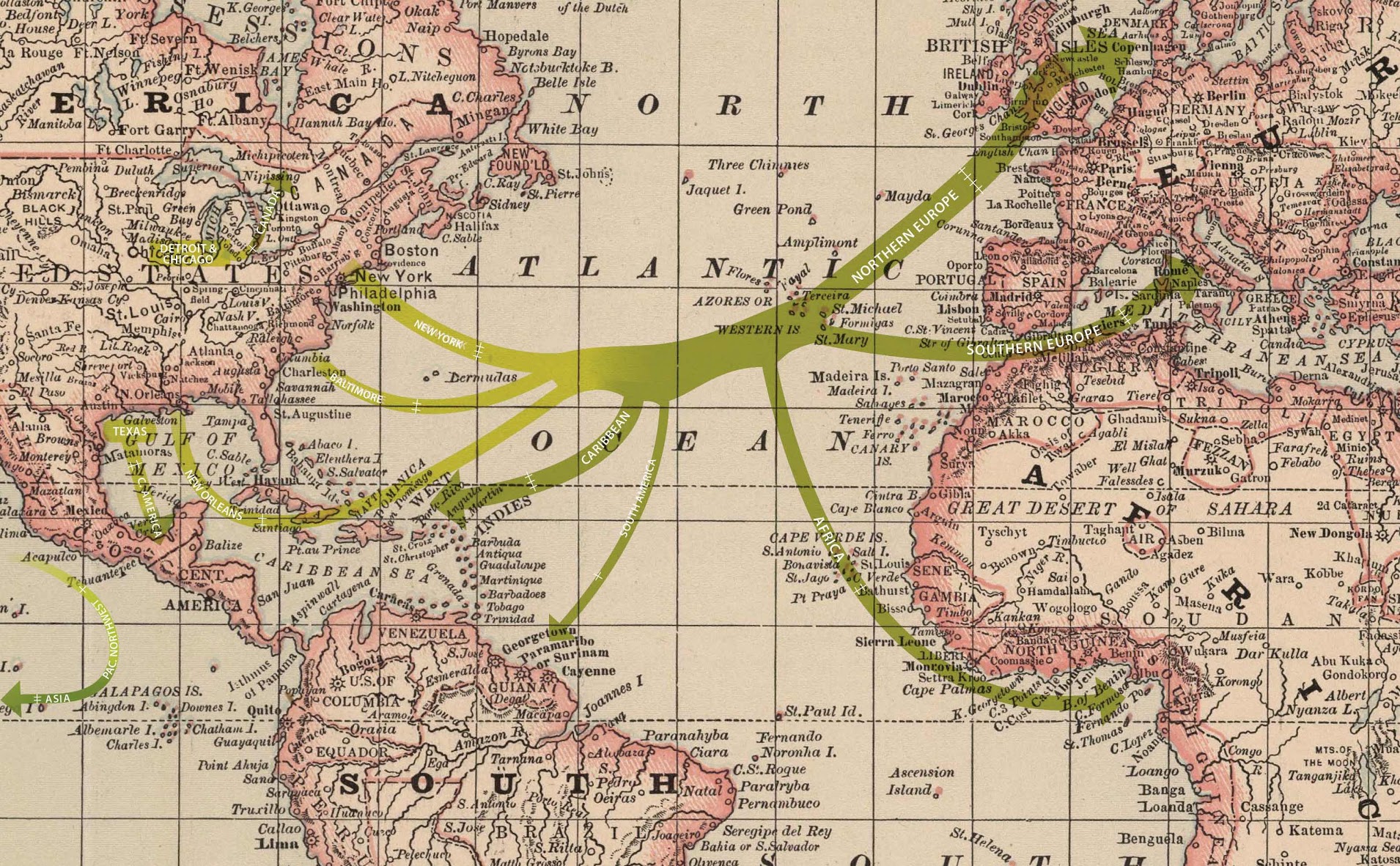

These maps show the growth in exports of finished oleomargarine from the United States to other regions in the world from 1890 to 1910. The government distinguished these exports from raw oleo oil (see this page), which producers also shipped by the thousands of tons to foreign markets.
For margarine, the trade grew from five export ports in 1890 (Boston, New York, Philadelphia, Detroit, and New Orleans) to six in 1910 and from five main global regional destinations to eight. This was an increase from about 6 million pounds to 26 million pounds by the first decade of the twentieth century. Most of those foreign shipments first went to British colonial holdings in the West Indies, before being displaced in priority by shipments to Germany, Norway, and The Netherlands by the early twentieth century. As with shipments of raw oleo oil, notable trends include a change in destination into the early 1900s to include expanding markets in Asia, Central America, South America, and Africa.
-
Because trade records provide a wide range of quantities per year, for the sake of reader legibility the maps represent proportions. For example, an arrow five-hatch-marks wide is five orders of magnitude greater than an arrow with one hatch mark, while the width of the five-hatch arrow is five times the width of the one-hatch arrow. Readers can thus view the maps to gain a sense of growth in export markets, relative quantities to various parts of the world, and sense of scale in the global marketplace for supposed adulterants.
-
The maps derive from government trade statistics that listed departure ports (export locations) and final destinations (import locations), but not together. For instance, while we know manufacturers shipped x pounds of raw oleo oil from New York in 1890, we do not know where, specifically, that specific quantity ended up. Therefore, the maps show the commodities shipped from individual U.S. ports to meet in the Atlantic before dispersing to final destinations.
-
In general, government statistics used to construct theses maps documented foreign imports by country. Thus, in creating these maps the countries were aggregated into regions such as Northern Europe, Southern Europe, South America, Central America, Africa, and Asia. On the export side, various cities were aggregated into regions based on geographical proximity. The full data sets show specific nations.

